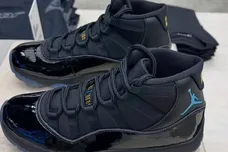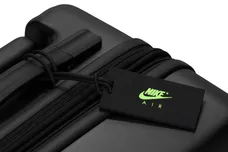“This year, me and God, we wasn’t seein’ eye to eye," Drake croons on the Yebba-assisted "Die Trying" from his joint project with PartyNextDoor, $OME $EXY $ONGS 4 U. The line sets the tone for an album that grapples with loss—of connection, of artistic hunger, and perhaps, of dominance. While Drake still clings to the title of rap’s de facto king, it’s clear his edge has dulled. Outside of Kanye, no one has truly threatened his reign throughout his career–until his 2024 feud with Kendrick Lamar. Even Pusha T’s scathing exposé only revealed that the industry’s perennial bachelor was, in fact, a father. Yet, that moment marked a shift: Drake, once the master of emotionally raw storytelling, now delivers heartbreak anthems that feel less confessional and more strategic. Where "Marvin’s Room" hit the raw nerve of romantic wounds, $OME $EXY $ONGS 4 U feels like a performative echo, lacking the urgency or authenticity of his earlier heartbreak anthems.
Unfortunately, this album doesn’t deliver the bitterness of "Marvin’s Room" or the triumphant pettiness of "How Bout Now." Instead, it offers something far more calculated. To pull off a project like this, PartyNextDoor needed to be more than a supporting act—he needed to be a true creative equal. But that’s where the album falters. Unlike Drake, PartyNextDoor has never admitted to being too rich to be relatable. His music thrives on introspection, something $OME $EXY $ONGS 4 U sorely lacks. And that’s the problem. Despite his introspective songwriting and naturally immersive sound, Party is relegated to a secondary role, making this feel less like a true partnership and more like yet another Drake project with borrowed aesthetics. Even as $OME $EXY $ONGS 4 U attempts to revive the nocturnal Toronto sound they helped popularize, the balance is skewed, with Party struggling to find space in an album that should have amplified his presence.
At a time when Drake faces mounting criticism, this album feels more like an attempt to assert his dominance over the industry than a sincere artistic effort. The heart of the issue is that Drake’s pen no longer carries the weight it once did. He’s less interested in crafting compelling narratives and more focused on delivering one-liners that make up the next viral Instagram caption. "CELIBACY" exemplifies this decline, as he lazily counts down the months, days, and hours since his latest love interest's last romantic encounter. And then there’s the problem with Party that amplifies this stagnation. Drake has long been criticized for keeping his OVO signees in the shadows, and here, PartyNextDoor sounds underused, overpolished, and trapped within Drake’s creative orbit. Their best collaborations have thrived in small doses, where their chemistry is complementary rather than forced. Stretching that formula across an entire album dilutes what makes them work in the first place.
Nostalgia remains a cheat code in today’s industry, and $OME $EXY $ONGS 4 U leans into it heavily. In some cases, it’s more subtle, like the “The Real Her” sample at the end of “SUPERMAN SPIDERMAN” or the faint echoes of Lil Wayne’s “Lollipop” that punctuate “CN TOWER.” But in other instances, it feels like a desperate attempt to recreate the emotional depth that once defined Drake’s sound. he album attempts to transport listeners back to late-night Toronto drives of the early 2010s. But instead of feeling immersive, it plays like an echo of a bygone era. Worse still, the structure of the album reinforces this artistic stagnation—Drake gets five solo songs to PartyNextDoor’s one, further proving that this was never a true collaborative effort.
“GIMME A HUG” attempts to deliver a dizzying rap banger, but despite multiple beat switches, it feels like stale territory. The gospel-infused intro paints Drake as a martyr in the so-called "Drake elimination," a narrative that only his most devoted fans could entertain. To everyone else, it sounds like he’s fishing for sympathy after taking an L. Meanwhile, “NOKIA,” undeniably groovy and even somewhat goofy, feels like a ploy for chart success—an effective one, at that. The track leans heavily on Drake’s exuberantly playful persona, but the energy borders on parody. As much as the song aims to re-establish Drake's infectious charisma, it becomes difficult to tell whether he's self-aware or simply mimicking himself.
For all its flaws, the album’s saving grace is PartyNextDoor. "DEEPER,” the Sauga singer’s only solo song, stands out as its most memorable moment, largely thanks to Drake’s absence. Party thrives in moody production, offering a level of intimacy and vulnerability that Drake increasingly shies away from. "SOMEBODY LOVES ME" is another rare highlight, where Party’s aching vibrato and vivid imagery momentarily add genuine emotional weight to the album. "LASERS" continues this trend, with Party weaving between lust and longing in a way that feels true to the atmospheric sound both artists helped popularize. But these moments are fleeting, lost in a sea of uninspired performances from his counterpart.
In a world of increasing turmoil, $OME $EXY $ONGS 4 U lands as an ineffective distraction. If you’re nursing a heartbreak, you might find some solace in the toxicity. But ultimately, Drake’s motivations now feel more driven by ego and external validation than passion. Where his music once thrived on authenticity, the romance here feels transactional, and heartbreak comes off as a business move. And as much as Party tries to salvage the project, he can only do so much when paired with an artist more concerned with quantity than genuine connection.







